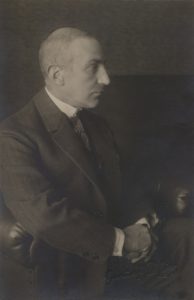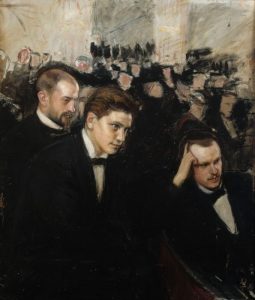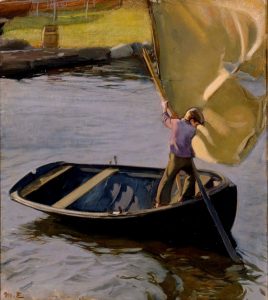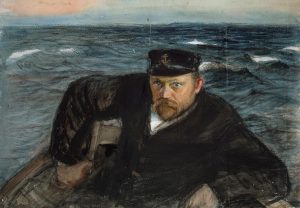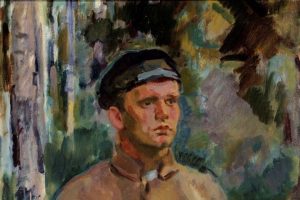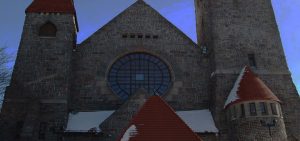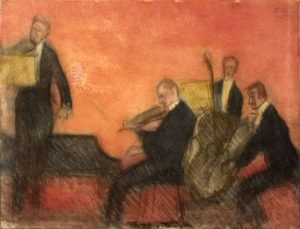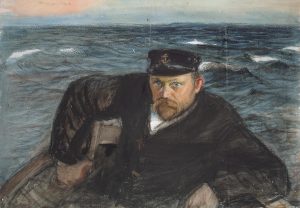Knut Magnus Enckell was born on November 9, 1870 in Hamina, Finland.
1870 - 1925
Knut Magnus Enckell
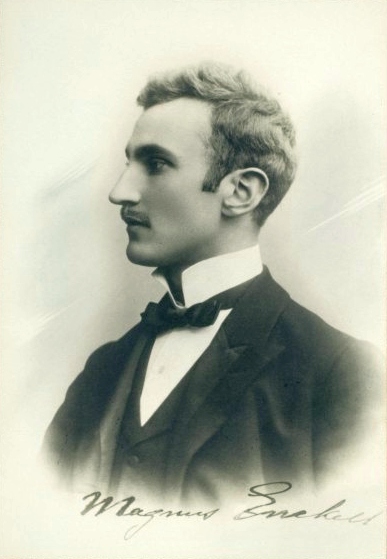
description
Finnish and Swedish painter, graphic artist, master of monumental painting, one of the first Finnish Symbolists.
He was born into a priest’s family and was the youngest of six sons. He received his art education in Paris.
Magnus Enckell was an extremely versatile artist. He went from complete lack of understanding and rejection to universal admiration and glory, and his creative manner underwent drastic changes. He not only proved himself in international art, but was able to establish artistic relations with France, which was very important for the formation of Finnish national painting. He was an active artist: organized exhibitions of Finnish painting in Berlin and Paris, as well as the exhibitions of French and Belgian art in Helsinki; became the leader of the famous group “Symbolist Septem”, which he founded with V. Thome and E. Tesleff. Creativity of the artist played a big role in the development of the Finnish avant-garde trends of the early twentieth century.
The most large-scale work of the artist is the decoration of St. John’s Cathedral in Temper. Enckell’s frescoes depicting the resurrection from the dead and ascension to heaven are more than 10 meters wide and 4 meters high.
Key ideas:
– Initially, the artist was a true traditional realist, but his most famous works belong to the symbolism, which, in the interpretation of Enckel, was subtly intellectual and quite complex for an unprepared spectator.
– Symbolist paintings of the artist contain a large number of allegories; they refer to mythology and biblical subjects.
– The author’s works are made in a strict and restrained manner, some of them are rather gloomy. Enckell preferred muted shades and a small number of colors: brown, gray, greenish, ocher, for example, in such works as “Awakening”, “Portrait of a Son” and others.
– After long creative searches and doubts, Enckell goes on to more saturated colors and optimistic stories in his canvases. His work is approaching Post-Impressionism with its planar solutions and clear lines. A striking example of this period is the picture “Boys on the shore”, filled with sunlight and vital energy.
– The artist painted portraits, still lifes, landscapes, subjects from mythology and religion. In his portraits, he did not follow any of the artistic trends, but painted in a free style, naturally showing his talent.
1870
1889
1891
1898
1900
1903
1906
1907
1912
1925
The birth of the artist
Started painting in Helsinki
Started painting in Helsinki, at the Drawing School of the Finnish Association of Arts.
First went to Paris
First went to Paris, where he became a student of the Academy of Julian. He experienced the influence of the masters of Symbolism and joined this art movement.
He made a long trip around Italy
He made a long trip around Italy. Mastered the technique of the fresco in Florence, having studied the works of Masaccio and Fra Angelico.
"Bathers in the Dark"
The artist broke up with Symbolism, and his painting acquired bright colors typical for Post-impressionism, that is demonstrated by the series “Bathers in the Dark”.
Organized exhibitions of Finnish art in Berlin and Paris
Organized exhibitions of Finnish art in Berlin and Paris; the following year he initiated the exhibition of French and Belgian paintings in Helsinki.
Carried out a bold plan of the presentation of Finnish art in the Autumn Salon in Paris
Carried out a bold plan of the presentation of Finnish art in the Autumn Salon in Paris (there was a separate room for Finnish artists). Being ambiguously welcomed, he decided to change his artistic style.
He began to work on the painting of the Cathedral of Saint John the Divine in Tampere
He began to work on the painting of the Cathedral of Saint John the Divine in Tampere, performed a huge fresco above the altar.
«Septem»
Organized together with his colleagues and associates art association “Septem”. The group held joint exhibitions and creative meetings.
The death of the artist
The artist died on November 27, 1925 in Stockholm, Sweden.


